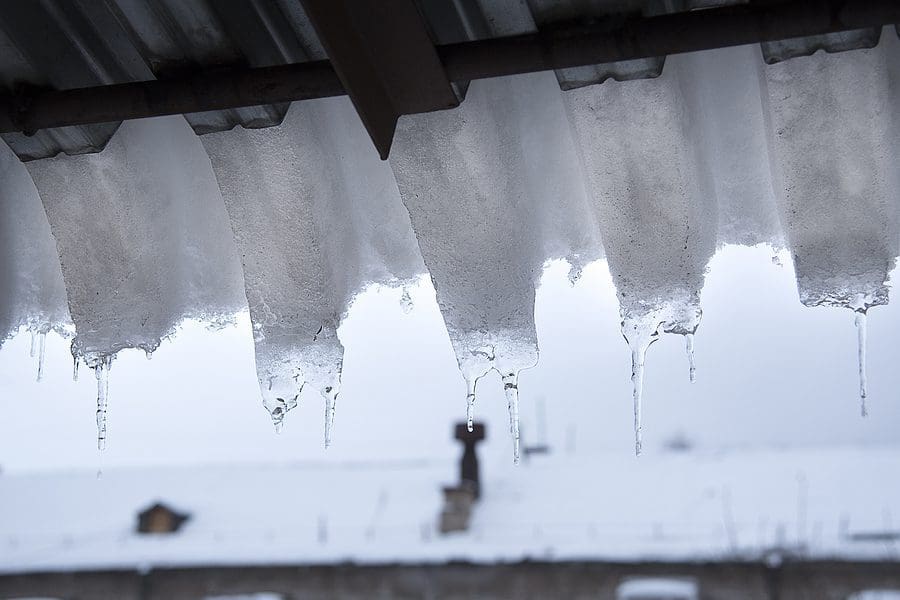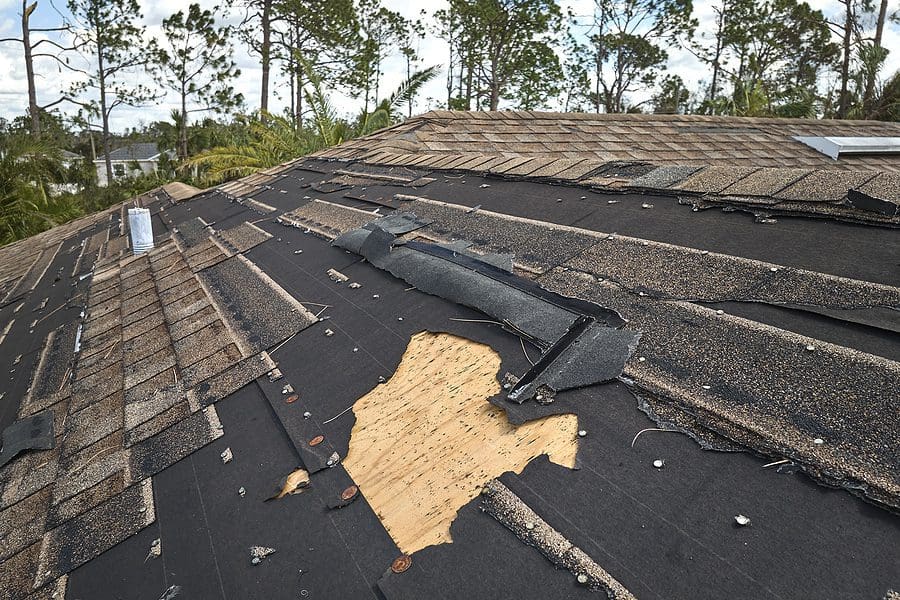No matter where you live, storm damage to your roof is one of a home or business owner’s worst fears. It might be as simple as a few missing shingles or as overwhelming as a tree crashing into your roof. Your home can be subjected to tornadoes, hurricanes, ice storms, wind, and rain, all of which can cause major damage to your property. Knowing what to do in this situation can be hard, especially when you’re stressed over an unexpected disturbance. So let’s take a look at what you need to do in the wake of storm damage.
Immediate Storm Aftermath
First things first. Ensure that you, your family or employees, and anyone else in the building are safe from harm. This may not be necessary with a more minor issue like missing shingles or dented gutters. But if you encounter significant conditions that compromise the integrity of your roofing structure, it may be best if you vacate the premise to avoid anyone getting hurt. This is especially true if your home has become exposed to the elements and the storm has not stopped.

Common Types of Storm Damage
- High Wind – winds above 39 mph are capable of causing noticeable damage to your roof
- Standing water – uneven areas and blocked drainage allows water to seep into your roof
- Hail – hailstorms can cause dents, break shingles, and ruin your curb appeal
- Debris – debris from a storm can collide with your roof, causing extensive damage
Take Initiative
Once the storm is over and you can take a breath, call your insurance company and schedule a time for an adjuster to come out and inspect your property. In the meantime, visit the site yourself and observe any damage you can spot from the safety of the ground. Write down any issues you can observe from your position. Take photos and record what you can so you have proof to present your areas of concern. Look for the following signs of storm damage:

- Damaged or missing shingles
- Granule debris
- Gutter or Flashing damage
- Tree branches or debris on or around your roof
- Leaking in attic or ceiling
- Ice dams
Leave the Storm Damage to Us
Once your insurance company has performed an inspection, they will tell you if your claim has been approved or not. Either way, you will need to contact a local roofing contractor to come out and assess the damage for themselves. Your roofing contractor will visit the property and record any issues they see, often submitting them to the insurance company as proof. If your insurance company has refused your claim or has not provided enough to resolve the damages, don’t panic. There are alternatives to help cope with the process.
Wagner can also offer assistance in helping convince your insurance company to adjust your claim. Once everything has been settled, we can get started on your roof repair or replacement.